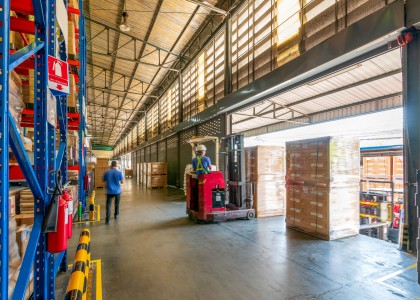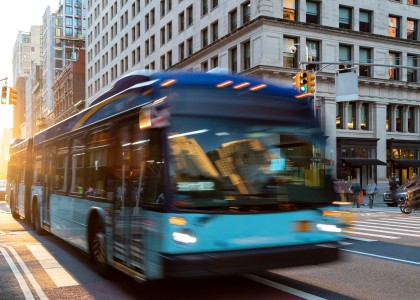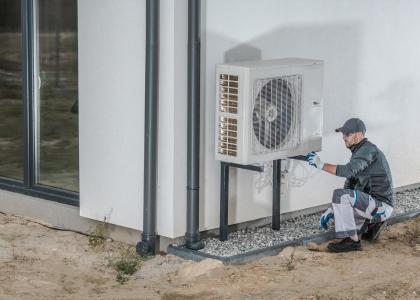The U.S. transportation sector faces critical challenges in 2025. With federal funding at risk, state and local leaders must act now to prioritize clean transportation projects. ACEEE is equipping decision-makers with strategies to accelerate progress.
The transportation sector is undergoing a transformative period of innovation. The rise of electrified vehicles is a major technological breakthrough, and new ways of planning for and investing in our transportation networks mean trading short-term fixes for long-term vision. While the current administration has begun attempts to claw back federal transportation investments under the Infrastructure Investment and Jobs Act (IIJA) and the Inflation Reduction Act (IRA), opportunities remain for state and local action to create a more sustainable and more affordable transportation system.
Transportation remains the largest source of greenhouse gas emissions and a leading source or major contributor to other health-harming air pollutants in the United States. Potential rollbacks to vehicle efficiency and emissions standards threaten to undermine the reductions to fuel costs, air quality improvements, and emissions reductions that these standards unlock. With a risk of halted or inconsistent federal guidance, coordinated action at the state and local levels is more critical than ever.
Helping project funders and implementers meet clean transportation goals
Local and state-level approaches to transportation funding decisions are changing. Awareness is rising that costly and resource-intensive highway expansions meant to reduce congestion are only a stopgap solution. To reduce costs, save people time, and improve climate impacts, a system-level approach to transportation project identification and budgeting is required.
ACEEE is collaborating with local and state transportation officials to help them reduce transportation costs and secure funding for priority infrastructure projects to create more livable communities. An upcoming paper on driving emissions reduction through project prioritization will provide insights for state transportation departments on how to use federal formula funding to maximize emissions reductions and improve mobility.
In partnership with NYSERDA, ACEEE is also developing a series of playbooks drawing from lessons learned from New York’s clean transportation prize projects. These resources will help future project implementers across the country with community engagement strategies, innovative financing strategies, and job training programs.
Electrifying heavy-duty vehicles
Although trucks make up less than 10% of vehicles on the road, they contribute to 28% of emissions from on-road vehicles. While sales of electric passenger cars and cargo vans are climbing, electric trucks and buses have yet to make a serious dent in market share. Yet there are promising developments that offer valuable examples for states striving to achieve their climate goals. At the San Pedro Port Complex—the nation’s largest trade gateway—growing adoption of electric trucks has helped contribute to a 90% reduction in air pollution from trucks entering the neighboring ports of Los Angeles and Long Beach.
ACEEE is working with utilities, state public utility commissions, fleets, and ports to develop forward-thinking strategies for truck fleet electrification. This work involves studying the energy needs of ports and other freight hubs and then working with utilities and regulators on proactive planning, program design, and demand reduction strategies to ensure grid capacity does not limit transition timelines. ACEEE is also conducting comparative market and economic analyses to help equip state and regional decision-makers, including public officials, fleet operators, and utilities, with the knowledge they need to make informed investments in sustainable, future-proofed freight charging and refueling infrastructure.
Expanding access to charging infrastructure
A major hurdle to continue the leap forward in EV adoption for personal vehicles is ensuring equitable access to EV charging infrastructure. Public charging availability has doubled in the past five years, reaching approximately 200,000 public charging ports nationwide. However, many lower-income neighborhoods remain EV charging deserts despite bearing the brunt of vehicle pollution.
ACEEE is actively supporting efforts to increase charging stations in underserved neighborhoods. Through our Energy Efficiency and Conservation Block Grant cohorts, we have shared best practices with local governments to help them deploy EV charging infrastructure effectively and equitably along with our partner the Electrification Coalition. A forthcoming report on expanding EV charging in multifamily affordable housing shares recommendations informed by conversations with housing developers. ACEEE also leads an EV working group for utilities focused on creating inclusive, scalable strategies to drive EV adoption in underserved neighborhoods.
Collaboration is required to drive clean transportation forward
Failure to act decisively in 2025 risks exacerbating climate change, worsening public health outcomes, and making the U.S. auto industry, battery supply chain, and manufacturing sector less competitive. However, there’s also tremendous opportunity for private-sector leaders, utilities, and state and local governments to drive progress.
This year, ACEEE is working to equip decision-makers with the tools needed to accelerate clean transportation solutions that reduce emissions and improve mobility for all communities.
This blog post is the third in a series on ACEEE’s plans for 2025. The first post focused on the challenging federal environment for energy efficiency this year, and the second was about the outlook for building efficiency and housing affordability.




